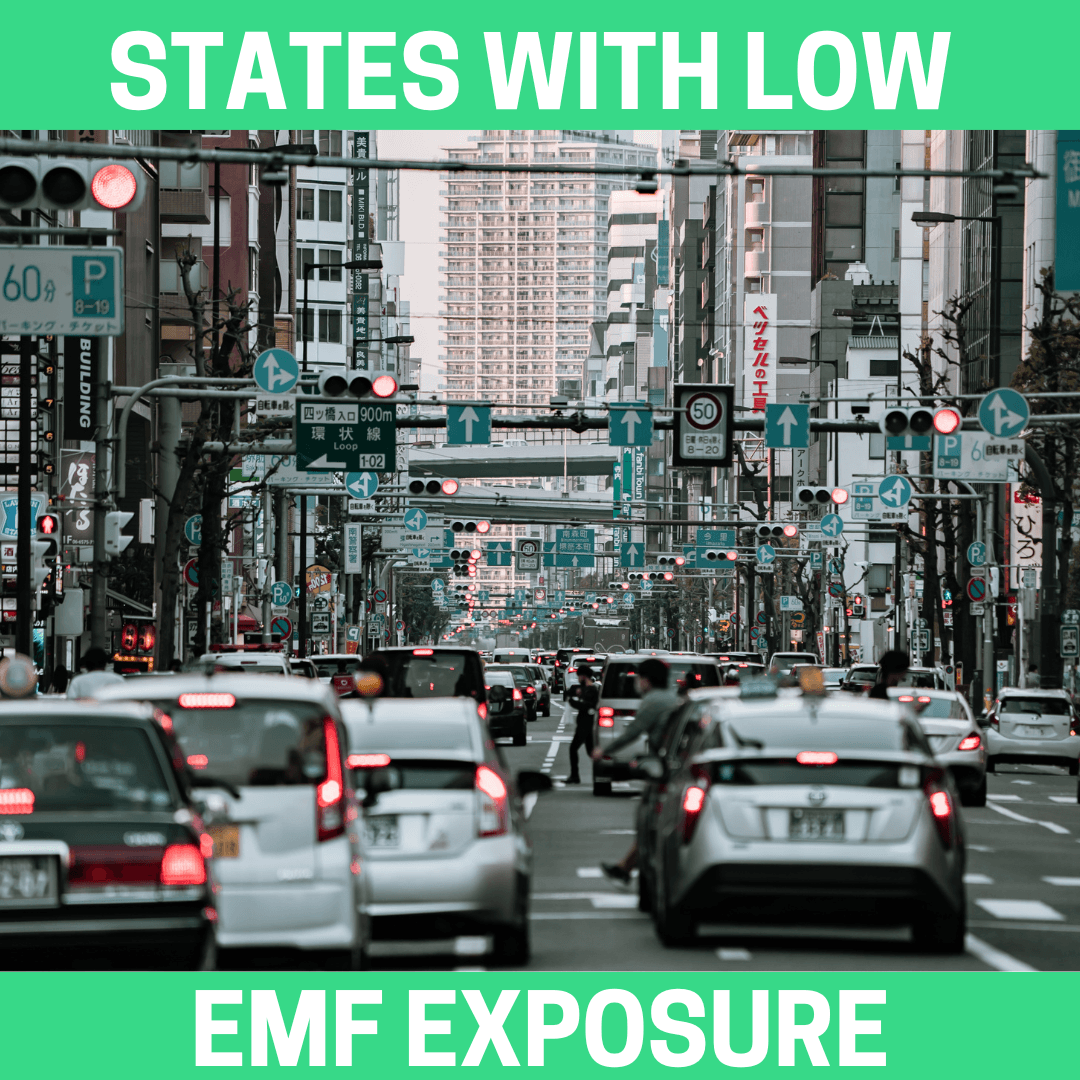With EMF exposure a constant in our technology obsessed culture, the thought of an EMF-free escape sounds like the ultimate retreat. Let’s explore the best countries with low EMF exposures.
In the fast-paced digital era, concerns about electromagnetic fields (EMFs) and their potential health impacts have gained increasing attention.
EMFs are generated by various electronic devices and power lines, and prolonged exposure has been associated with health issues.
For individuals seeking a respite from high EMF environments, there are countries around the world that offer relatively low EMF exposures.
Let's explore some of these countries and the factors contributing to their low EMF environments.
Understanding EMFs:

Before delving into countries with low EMF exposures, it's essential to understand what electromagnetic fields are and how they can affect human health.
EMFs are generated by the movement of charged particles, such as electrons. They can be categorized into two types: ionizing and non-ionizing.
Ionizing EMFs, such as X-rays and gamma rays, have enough energy to remove tightly bound electrons from atoms, potentially causing cellular damage.
Non-ionizing EMFs, which include radiofrequency (RF) fields and extremely low-frequency (ELF) fields, have lower energy levels and are generally considered less harmful.
In 2011, the International Agency for Research on Cancer classified non-ionizing EMFs as 'potentially carcinogenic'.
There has been an increased concern among many experts on the effects of EMF on human health with the rise of use of cellphones and wearable technology, particularly in children.
As children are more vulnerable to EMF exposure, some experts are calling the current EMF exposure standards as far too relaxed.
Health Effects of EMFs

While the health effects of EMFs remain a subject of ongoing research and debate, some studies suggest that prolonged exposure to high levels of EMFs may be linked to various health issues, including headaches, sleep disturbances, and increased cancer risk.
As a result, some individuals are choosing to minimize their exposure by seeking out countries with lower EMF environments.
Factors Influencing EMF Levels:
Several factors contribute to the levels of EMFs in a particular environment. Understanding these factors is crucial for identifying countries with low EMF exposures. Some of the key contributors include:
Population Density:- High population density often correlates with increased electronic device usage and more extensive infrastructure, leading to higher EMF levels.
- Countries with lower population density may consequently have lower overall EMF exposures.
- The level of technological development and the prevalence of wireless communication infrastructure can significantly impact EMF levels.
- Countries with advanced technological infrastructures may have higher EMF exposures compared to those with less developed systems.
- The method and efficiency of power distribution in a country play a role in EMF exposure.
- Countries that prioritize underground power lines and employ advanced technologies to reduce power line emissions may offer lower EMF environments.
- Stringent regulations on the use of certain technologies and the implementation of safety standards can influence EMF levels.
- Countries with comprehensive guidelines and restrictions on EMF-emitting devices may provide a safer environment for residents and visitors.
- The natural geography of a region, including mountains, hills, and bodies of water, can influence the dispersion of EMFs.
- Areas with natural barriers may experience lower concentrations of EMFs.
Countries with Low EMF Exposures:

Now that we understand the factors influencing EMF levels, let's explore some countries known for their relatively low EMF environments:
Bhutan

Nestled in the Eastern Himalayas, Bhutan is renowned for its commitment to Gross National Happiness.
With a low population density and a focus on sustainable development, Bhutan provides a serene environment with limited electronic pollution.
Greenland

The vast and sparsely populated landscapes of Greenland contribute to its low EMF levels.
With a small population and a commitment to preserving its natural beauty, Greenland offers a peaceful escape from high-tech urban environments.
New Zealand

Known for its breathtaking landscapes and outdoor activities, New Zealand also boasts relatively low EMF exposures.
The country's commitment to environmental conservation and its diverse geography contribute to a healthier living environment.
Iceland

With its clean and renewable energy sources, Iceland is considered one of the countries with low EMF exposures.
The use of geothermal and hydropower minimizes the reliance on traditional power lines and reduces the overall impact of EMFs.
Canada

The country has implemented strict regulations on the use of certain technologies, contributing to a safer living environment.
Namibia

The arid landscapes and low population density of Namibia contribute to its status as a country with relatively low EMF exposures.
The focus on preserving the natural environment aligns with efforts to minimize electronic pollution.
Mongolia

The vast steppes and nomadic lifestyle of Mongolia result in lower population density and reduced technology infrastructure.
Mongolia offers a tranquil setting with lower EMF exposures compared to densely populated urban areas.
Australia

Australia's diverse geography, including expansive deserts and remote areas, contributes to lower overall EMF levels.
The country's commitment to environmental conservation also plays a role in providing a healthier living environment.
Costa Rica

Known for its biodiversity and commitment to sustainable living, Costa Rica offers a relatively low EMF environment.
The emphasis on eco-friendly practices and the integration of renewable energy sources contribute to a healthier living space.
Finland

Finland's low population density and commitment to environmental sustainability contribute to its reputation as a country with lower EMF exposures.
The use of advanced technologies in power distribution and a focus on minimizing electronic pollution enhance the overall living environment.
Is It Time to Move?
As concerns about the potential health impacts of prolonged EMF exposure continue to grow, individuals are increasingly seeking refuge in countries with lower EMF environments.
The factors influencing EMF levels, including population density, technology infrastructure, power distribution, government regulations, and natural geography, play a crucial role in determining the overall electronic pollution in a given region.
While the countries mentioned in this articlet are known for their relatively low EMF exposures, it's essential to note that EMF levels can vary within a country and even within different regions of a city.
Additionally, ongoing research is necessary to better understand the long-term effects of EMF exposure on human health.
Individuals concerned about EMF exposure should consider adopting precautionary measures regardless of their location.
These measures may include using EMF shielding devices, minimizing electronic device usage, and creating low-EMF zones within living spaces.
Ultimately, the quest for a low-EMF lifestyle is part of a broader movement toward mindful living and environmental consciousness.
As technology continues to advance, finding a balance between the benefits of connectivity and the potential health risks associated with EMF exposure will be crucial for creating healthier living environments around the world.






